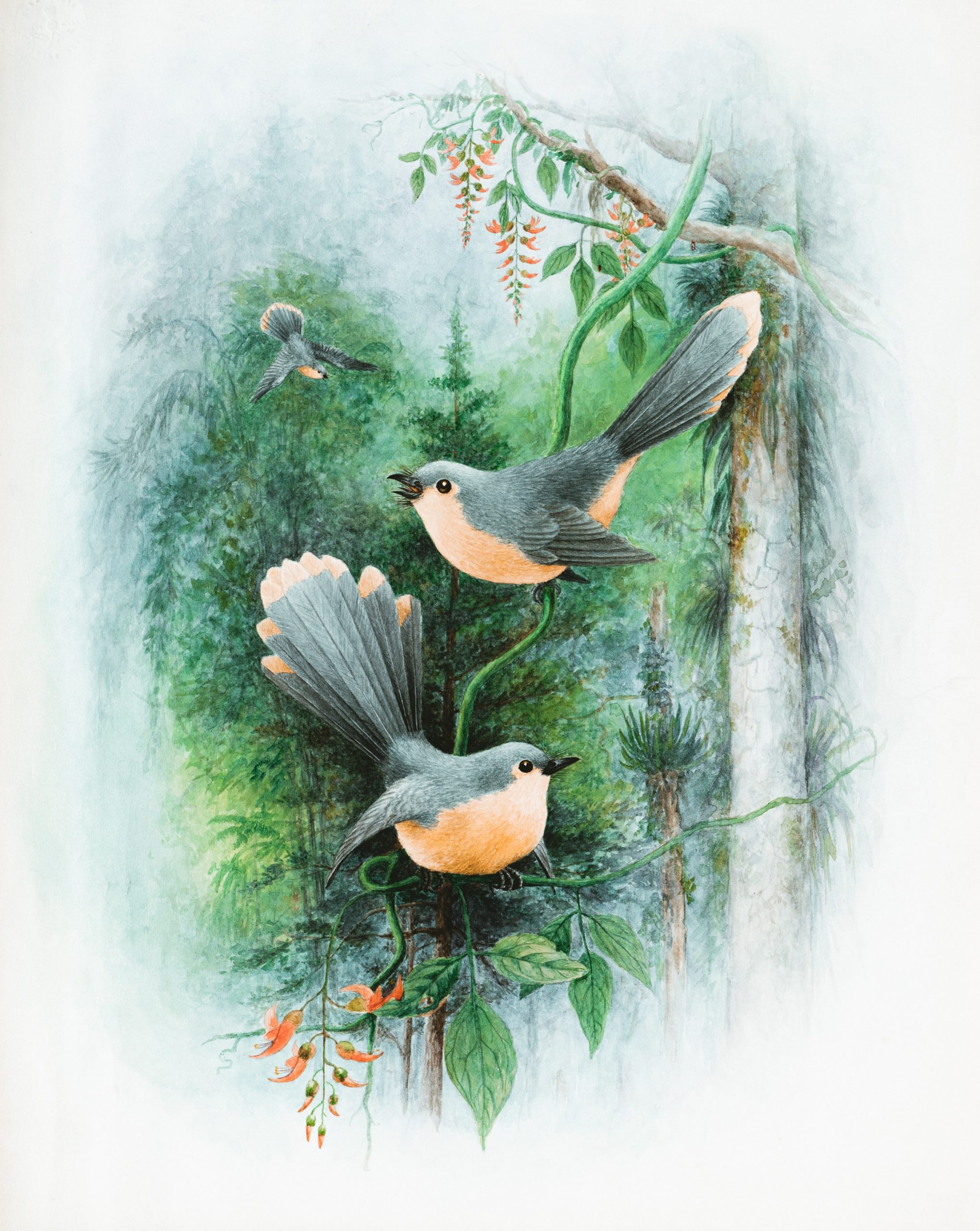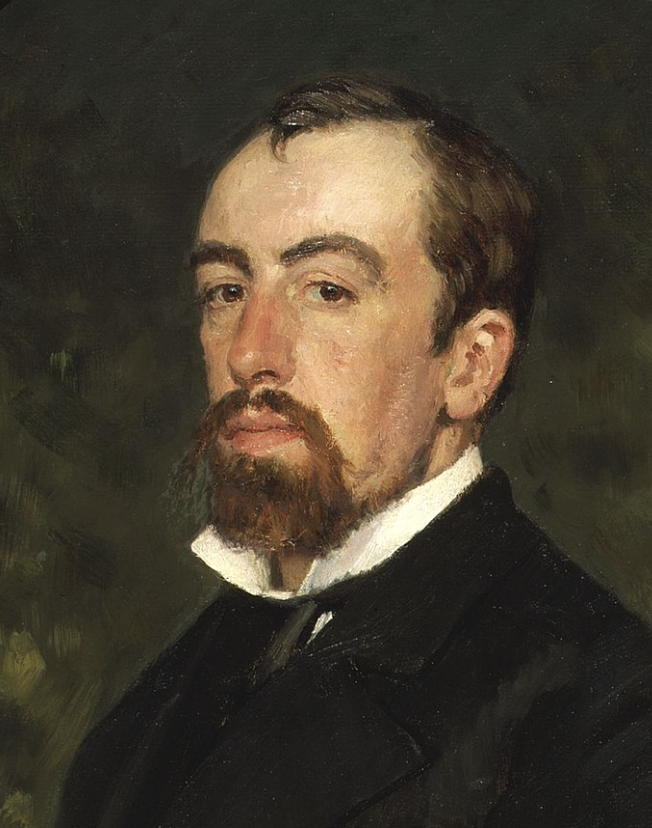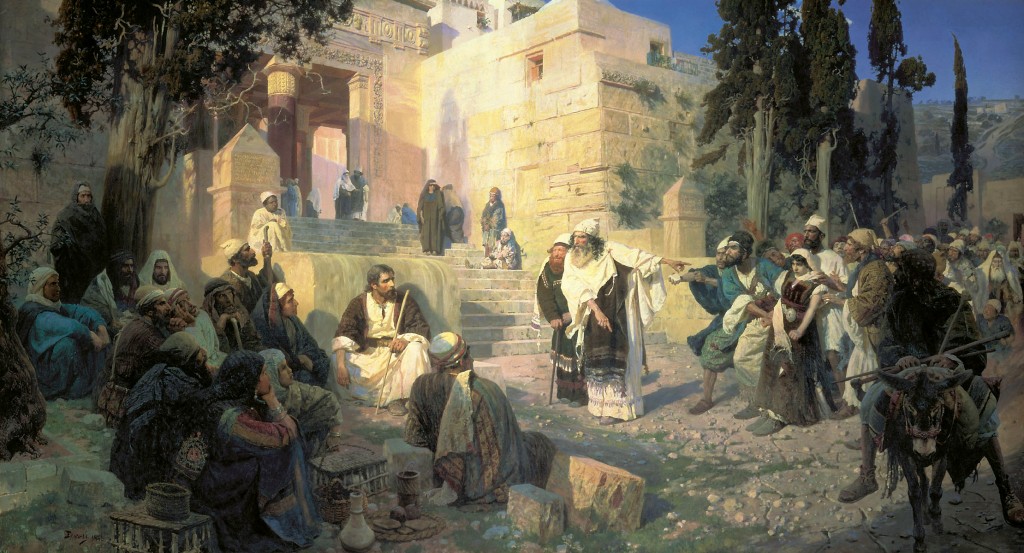The Privileged Life: The Masterpiece that Captured My Heart

“So when they continued asking Him, He raised Himself up and said to them, ‘He who is without sin among you, let him throw a stone at her first.’” (John 8:7)
I stood in the Siberian art gallery and stared. I lost complete track of time, all sense of where I was. I lost myself into the depth of the painting, joining the spectators within it, blending into the brushstrokes. I waited breathlessly, as they did, to see what would happen.
It’s been more than two decades since that moment, and neither before nor since have I been so completely touched by a work of art.
Although it goes by various names, it’s a massive painting commonly called “Christ and the Sinner.” It spans the entire wall of the room inside the V. P. Sukachev Art Museum in Irkutsk, Russia. It has a slightly larger twin that hangs in the State Russian Museum in St. Petersburg. That one is 20 feet wide by more than 10 feet tall. Impressive works, for any art genre.

The artist was Vasily Polenov, who lived from 1844 to 1927. The painting I saw was his lifetime masterpiece, taking two decades to execute.
Prior to completing the work in 1888, Polenov journeyed to the Middle East and Egypt, absorbing views of landscapes, colors, sunlight, and people in the marketplaces. His experiences inspired him to create a series of scenes from the life of Jesus Christ, “the central undertaking” of his life, including this epic scene at the Temple in Jerusalem. Polenov “sought out the historical truth” about Christ, desiring to “to present his lively image in visual art, too, to present him such as he was in reality.”*
What’s striking about the painting, other than its almost photographic realism, are the people and tension of the frozen moment. The story is from John 8, regarding the woman who was dragged before Jesus Christ by her accusers:
Then the scribes and Pharisees brought to Him a woman caught in adultery. And when they had set her in the midst, they said to Him, “Teacher, this woman was caught in adultery, in the very act. Now Moses, in the law, commanded us that such should be stoned. But what do You say?” This they said, testing Him, that they might have something of which to accuse Him. But Jesus stooped down and wrote on the ground with His finger, as though He did not hear. So when they continued asking Him, He raised Himself up and said to them, “He who is without sin among you, let him throw a stone at her first.” And again He stooped down and wrote on the ground. Then those who heard it, being convicted by their conscience, went out one by one, beginning with the oldest even to the last. And Jesus was left alone, and the woman standing in the midst. When Jesus had raised Himself up and saw no one but the woman, He said to her, “Woman, where are those accusers of yours? Has no one condemned you?” She said, “No one, Lord.” And Jesus said to her, “Neither do I condemn you; go and sin no more.” (John 8:4-11)
Illuminated in Polenov’s view of this episode are the hostile, wickedly angry faces of the Jewish leaders. Rocks are in their hands. The accused woman, terrified and resistant to the forces against her, faces Jesus with her fists clenched. A robed leader wags his fingers and practically spits his challenge to Jesus. Onlookers, in the shadows, watch silently in apprehension.
But Jesus, still sitting at this point, regards the scene before Him with a serious expression. His right hand is poised to write with a fingertip in the dust beneath His feet. He knows that the accusation brought before Him is not really aimed at the woman…but at Him.

“Christ and the Sinner (Who is without sin?)”
There is an authenticity about Polenov’s Christ, depicted as an ordinary man among other men and women. No halo rests over His head. We can’t tell if Polenov saw Him as tall or short. But what we can see of the artist’s portrayal is that Jesus was Someone who transcended the situation. Jesus’ face radiates the wisdom of the ages…with eyes full of concern for the woman and yet woeful for the cold hearts of her accusers.
The artist’s intent was to teach people the concept of kindness and forgiveness. “I love the gospel tales beyond words,” Polenov wrote in 1897. “I love this naïve and honest story, love this pure and lofty ethics, love this singular humanity which permeates the entire teaching; finally, I love this tragic, horrid but also grandiose finale.”*
Polenov’s faith in Christ was never documented. The painter appeared to believe that Jesus was a real historical figure, someone to be admired. Polenov engaged in philosophical discussions with viewers, speaking on the idea of Christian love for one’s neighbors and on moral self-improvement.
Despite this lack of understanding about the full Gospel message, Polenov nevertheless devoted his life to illustrating Christ’s work and mission. Shortly after he finished this work, Polenov wrote, “I believe that art must give happiness and joy, otherwise it’s worth nothing. There is so much misery, so much vulgarity and filth in life that if art drenches you in horror and villainy, living would become too difficult.”*
His painting certainly captivated me…not so much with happiness and joy, but with awe, wonder, and introspection about biblical truths.
Why? I’m not completely sure. I found myself among the spectators, among the rapt followers who craved Christ’s teaching. I saw myself in the position of the accused woman. Sadly, I also perceived myself among the rabble-rousing crowd of prideful accusers…I could feel the rocks in my hands.
But when I take my eyes off myself to focus on the face of Christ, I see the Son of God as those around Him did—as a living, breathing Man. He viewed our sin with sorrow and yet did not condemn us. With a compassion borne out of His overwhelming love for us, He carried our iniquity all the way to His death on the cross.
Polenov showed Jesus as the Christ I would have liked to have seen: the One I could approach, the One who would accept me as I am, the One with whom I could speak and yet be speechless in worship. While I would never worship an image of Christ, this painting compelled me to recognize the reality of Christ as both God and Man. Jesus was, is, and always will be the Savior of the world.
Friend, when you are tossed by doubts about the evidence for Christ, remember that His coming to earth was trumpeted as the arrival of Emmanuel—“God with us.” Remember this image, seeing that Jesus was both God and a fellow member of mankind, visible to us in the flesh and yet transcending this life by His Spirit. Remember that He is still approachable, still compassionate, still loving, still forgiving.
Consider the words He spoke immediately after telling the woman to go and sin no more. The very next verse has Jesus saying, “I am the light of the world. He who follows Me shall not walk in darkness, but have the light of life.” (John 8:12)
Let’s live our lives this week in the reality of His existence on earth, in the reality that He remains God in the Trinity. Let’s follow His light, to go and sin no more.
O Jesus Christ, how I wish I could have viewed the beauty of Your holiness, to witness Your marvelous works, to hear Your words of comfort in person. And yet, I praise You now for the words that have been preserved from You and about You in Scripture. Give me a greater faith to follow You, having not seen you with my own eyes but trusting by Your Spirit that You are still sovereign over my life. Bless me, O Lord, with Your presence this week. Turn my eyes to worship only You, in awe and wonder. In Your name, Amen.
*Paston, Elonora: “Vasily Polenov: ‘I love the gospel tales beyond words…’” The Tretyakov Gallery Magazine (2011) https://www.tretyakovgallerymagazine.com/articles/4-2011-33/vasily-polenov-i-love-gospel-tales-beyond-words
#tretyakovgallery #polenov #Christandthesinner #womancaughtinadultery #epicpainting #irkutsk #siberia #irkutskregionalartmuseum #storiesofJesus #realism #forgiveness
© Copyright 2023 Nancy C. Williams, Lightbourne Creative (text) Note: Images imbedded in this blog are from Wikimedia Commons, public domain.
Scripture taken from the New King James Version®. Copyright © 1982 by Thomas Nelson. Used by permission. All rights reserved.
To learn more about the grace of Jesus Christ, go to this page: https://lightbournecreative.com/good-news-for-you/










